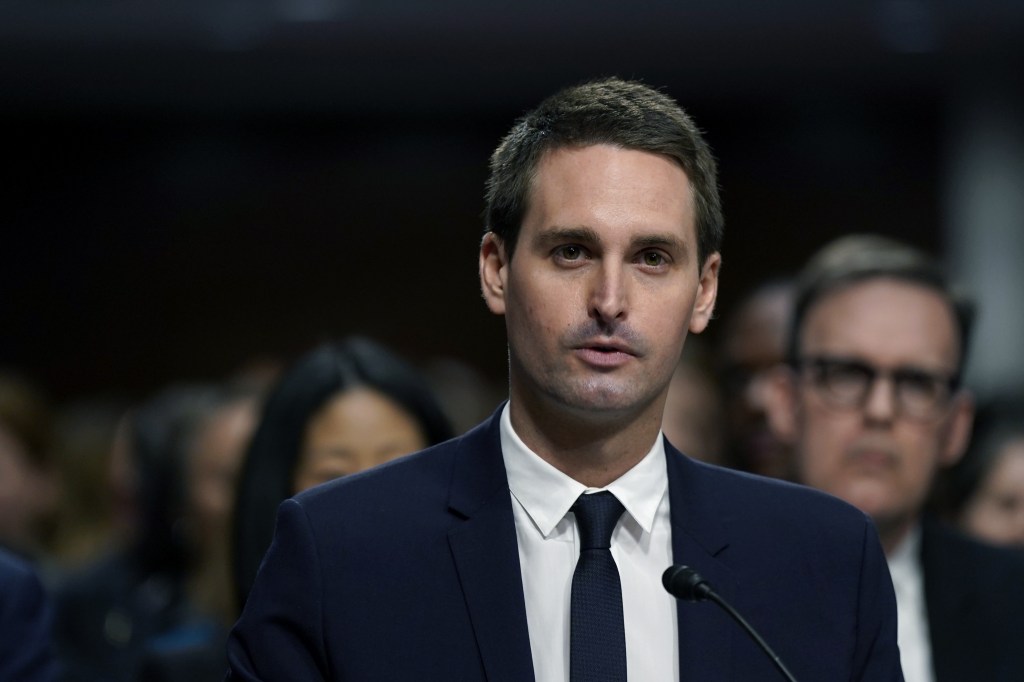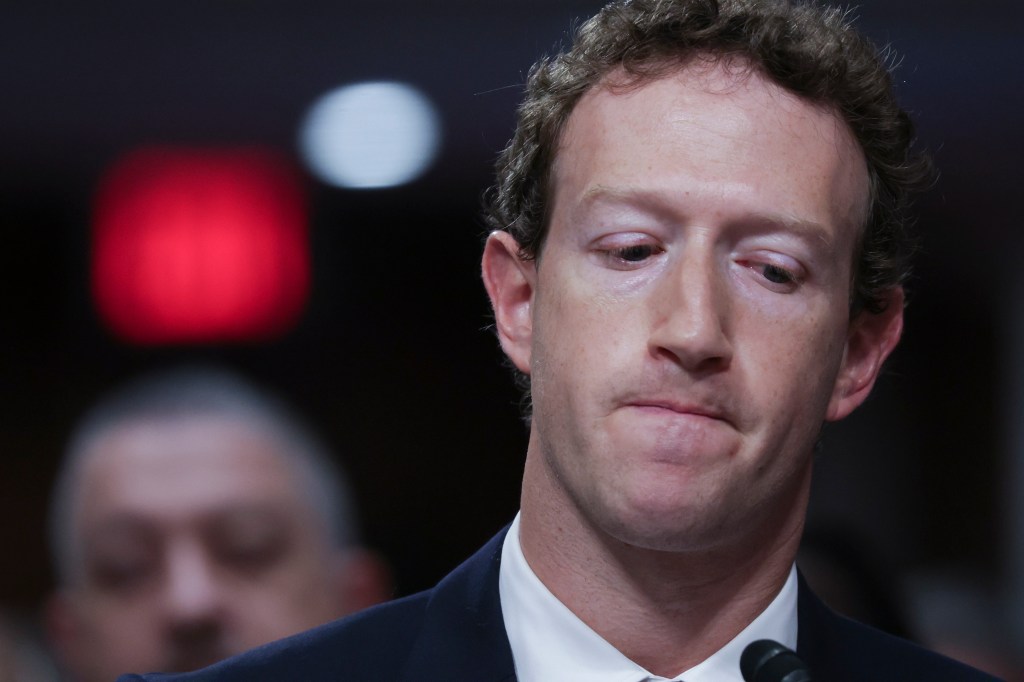Trending News
17 October, 2024
8.3°C New York

Snapchat is officially rolling out native support for iPad, the company announced in the app’s latest release notes. Since Snapchat’s launch in 2011, the social networking app has only been available on iPads as an iPhone app with large black borders around it, not as a native app for the iPad’s bigger screen.
With this new update, support for iPad is rolling out 13 years after Snapchat launched on iOS.
“Snapchat now offers native support for iPad,” the App Store release notes simply state. “This means that Snapchat will fill an iPad’s full screen, providing you with a larger canvas when capturing Snaps and allowing you to see more friends on the 2nd and 4th tabs.”
The new app increases accessibility on iPads, while also serving as a bit of a testing ground for new features, as you can play around with tools, AR experiences and AI on a bigger screen. It’s unclear why Snap has waited until now to bring its app to iPad, nor has the company disclosed if it will offer any new experiences for iPad users.
Unfortunately, the new app still isn’t fully optimized for tablets as it can only run in portrait mode, not landscape mode.
The launch of the native app comes as TikTok released an update last year that was designed to take advantage of larger screens like iPads and tablets. The update started allowing people to use the app in landscape mode and navigate the app more easily. By releasing native support for iPads, Snapchat is better poised to compete with TikTok, and possibly get more eyes on its TikTok competitor, Spotlight.
It’s also worth noting that another Instagram has yet to launch a native iPad app, which gives both Snapchat and TikTok a bit of a competitive edge over the Meta-owned platform.

During today’s Senate Judiciary Committee hearing on kids’ online safety, Snap CEO Evan Spiegel shared that 20 million teenagers use Snapchat in the United States and that around 200,000 parents use its Family Center supervision controls. He also shared that approximately 400,000 teen accounts have been linked to a parent’s account through Family Center. Spiegel’s testimony marks the first time that Snap has shared real-world metrics regarding the usage of Snapchat’s parental controls.
Snapchat’s Family Center, which allows parents to see who their teens are friends with on the app and who they have been communicating with, first launched in 2022.
Spiegel shared the numbers after Senator Alex Padilla (D-Calif) asked the CEO’s of Meta, TikTok, X and Discord to disclose how many minors were using their platforms and how many parents were using parental supervision controls offered by the services.
“We create a banner for Family Center on the user’s profiles,” Spiegel said after being asked what Snapchat was doing to ensure parents and guardians are aware of the tools. “So the accounts we believe may be the age that they can be parents can see the entry point into Family Center easily.”
Snap introduced the parental controls in response to increased pressure on social networks to better protect minor users from harm. Snapchat’s rollout of Family Center followed the launches of similar parental control features across other apps, including Instagram, TikTok and YouTube.
Spiegel was the only CEO to share numbers in response to Senator Padilla’s question.
Meta CEO Mark Zuckerberg said he was unable to provide specific numbers, but said that the company runs “extensive ad campaigns” both on its platform and outside to raise awareness of its parental supervision tools.
X CEO Linda Yaccarino shared that less than 1% of the platform’s 90 million U.S. users are between the ages of 13 and 17, and that the company is discussing parental controls.
“Being a 14-month-old company we have reprioritized child protection and safety measures,” Yaccarino said. “We have just begun to talk about and discuss how we can enhance those with parental controls.”
TikTok CEO Shou Zi Chew said he was unable to share specifics, but that TikTok was “one of the first platforms” to give parents supervision controls. Discord CEO Jason Citron said that Discord raises awareness of its parental controls through promotional videos and in-app prompts.
Mark Zuckerberg says Apple and Google should manage parental consent for apps, not Meta
Mark Zuckerberg defends teenage creators’ right to public Instagram accounts

In 2016, Facebook launched a secret project designed to intercept and decrypt the network traffic between people using Snapchat’s app and its servers. The goal was to understand users’ behavior and help Facebook compete with Snapchat, according to newly unsealed court documents. Facebook called this “Project Ghostbusters,” in a clear reference to Snapchat’s ghost-like logo.
On Tuesday, a federal court in California released new documents discovered as part of the class action lawsuit between consumers and Meta, Facebook’s parent company.
The newly released documents reveal how Meta tried to gain a competitive advantage over its competitors, including Snapchat and later Amazon and YouTube, by analyzing the network traffic of how its users were interacting with Meta’s competitors. Given these apps’ use of encryption, Facebook needed to develop special technology to get around it.
One of the documents details Facebook’s Project Ghostbusters. The project was part of the company’s In-App Action Panel (IAPP) program, which used a technique for “intercepting and decrypting” encrypted app traffic from users of Snapchat, and later from users of YouTube and Amazon, the consumers’ lawyers wrote in the document.
The document includes internal Facebook emails discussing the project.
“Whenever someone asks a question about Snapchat, the answer is usually that because their traffic is encrypted we have no analytics about them,” Meta chief executive Mark Zuckerberg wrote in an email dated June 9, 2016, which was published as part of the lawsuit. “Given how quickly they’re growing, it seems important to figure out a new way to get reliable analytics about them. Perhaps we need to do panels or write custom software. You should figure out how to do this.”
Facebook’s engineers solution was to use Onavo, a VPN-like service that Facebook acquired in 2013. In 2019, Facebook shut down Onavo after a TechCrunch investigation revealed that Facebook had been secretly paying teenagers to use Onavo so the company could access all of their web activity.
After Zuckerberg’s email, the Onavo team took on the project and a month later proposed a solution: so-called kits that can be installed on iOS and Android that intercept traffic for specific subdomains, “allowing us to read what would otherwise be encrypted traffic so we can measure in-app usage,” read an email from July 2016. “This is a ‘man-in-the-middle’ approach.”
Do you know more about Project Ghostbusters? Or other privacy issues at Facebook? From a non-work device, you can contact Lorenzo Franceschi-Bicchierai securely on Signal at +1 917 257 1382, or via Telegram, Keybase and Wire @lorenzofb, or email. You also can contact TechCrunch via SecureDrop.
A man-in-the-middle attack — nowadays also called adversary-in-the-middle — is an attack where hackers intercept internet traffic flowing from one device to another over a network. When the network traffic is unencrypted, this type of attack allows the hackers to read the data inside, such as usernames, passwords, and other in-app activity.
Given that Snapchat encrypted the traffic between the app and its servers, this network analysis technique was not going to be effective. This is why Facebook engineers proposed using Onavo, which when activated had the advantage of reading all of the device’s network traffic before it got encrypted and sent over the internet.
“We now have the capability to measure detailed in-app activity” from “parsing snapchat [sic] analytics collected from incentivized participants in Onavo’s research program,” read another email.
Later, according to the court documents, Facebook expanded the program to Amazon and YouTube.
Inside Facebook, there wasn’t a consensus on whether Project Ghostbusters was a good idea. Some employees, including Jay Parikh, Facebook’s then-head of infrastructure engineering, and Pedro Canahuati, the then-head of security engineering, expressed their concern.
“I can’t think of a good argument for why this is okay. No security person is ever comfortable with this, no matter what consent we get from the general public. The general public just doesn’t know how this stuff works,” Canahuati wrote in an email, included in the court documents.
In 2020, Sarah Grabert and Maximilian Klein filed a class action lawsuit against Facebook, claiming that the company lied about its data collection activities and exploited the data it “deceptively extracted” from users to identify competitors and then unfairly fight against these new companies.
An Amazon spokesperson declined to comment.
Google, Meta, and Snap did not respond to requests for comment.
This story was updated to correct the link to the discovery documents in the fourth paragraph.
Facebook will shut down its spyware VPN app Onavo